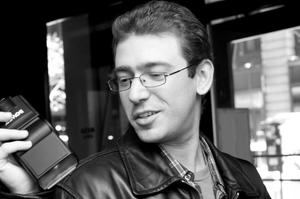ESP Biography
VIKTOR GAMARNIK, Columbia University grad student in BME
|
Major: Biomedical Engineering College/Employer: Columbia University Year of Graduation: G |

|
Brief Biographical Sketch:
I graduated from Columbia Engineering in 2008, and am currently a student in the MD/PhD program. My research focuses on medical image analysis (extracting information from things like MRI, CT, and Ultrasound images). I am really passionate about both medicine and engineering, and I see teaching as a great way of sharing my enthusiasm with others. Past Classes(Clicking a class title will bring you to the course's section of the corresponding course catalog)E109: Transforming Images: How Does it Work? in Splash Fall 2013 (Nov. 16, 2013)
Have you ever wondered how a computer can recognize objects? Everyone knows computers can do math quickly, but what if we have a picture of some coins? Do you think it could count them efficiently? How difficult do you think it would be to teach it how to do that?
During this introductory class on image processing, we’ll answer all these questions and show you that by seeing an image as a matrix, a mathematical object, a computer can actually extract a lot of information from a collection of pixels. Using simple euclidean geometry and some clever calculation, we’ll see how an equation defining a circle could teach a computer to see circular shapes using the Hough Transform. If time allows, we will also look at how computers learn to see things all the way from the inside of your body to the surface of Mars! So come along, and have your first encounter with computer vision!
E16: Transforming Images: Hough Does it Work? in Splash Fall 2012 (Oct. 14, 2012)
Have you ever wondered how a computer can recognize objects? Everyone knows computers can do math quickly, but what if we have a picture of some coins? Do you think it could count them efficiently? How difficult do you think it would be to teach it how to do that?
During this introductory class on image processing, we’ll answer all these questions and show you that by seeing an image as a matrix, a mathematical object, a computer can actually extract a lot of information from a collection of pixels. Using simple euclidean geometry and some clever calculation, we’ll see how an equation defining a circle could teach a computer to see circular shapes using the Hough Transform. If time allows, we will also look at how computers learn to see things all the way from the inside of your body to the surface of Mars! So come along, and have your first encounter with computer vision!
|
|
